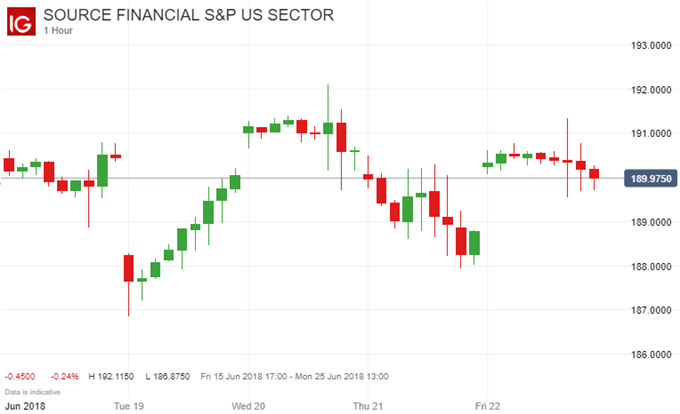
Talking Points:
- The major US banks passed the Fed’s Dodd-Frank stress test but now await a difficult second round
- Stress test performance has continued to improve since implementation in 2009
- Next week’s CCAR test is the final step before capital plans are approved or denied
- Monetary policy, trade wars, and risk trends all loom on future stress test results
Stay up to date with important economic data with our Economic Calendar and gain insight on market moving events from our Live Webinars.
The major US financial firms posted passing results for the Fed’s annual stress test under the Dodd-Frank framework and continue to improve their results since the evaluations started in 2009. This year’s test was of increased difficulty as unemployment rests near 4.0% and tax cuts have bolstered capital for US firms. Under such rosy conditons, the Fed created a risk scenario of unemployment at 10% and a steepening yield curve. Still, all major participants passed and now await next week’s Comprehensive Capital Analysis and Review (CCAR) test. This test is the last step before the Fed approves bank-submitted capital plans but is often viewed as being more difficult because of operational factors like risk management versus a stricly numbers-oriented test in the first week.
In recent years, banks have calibrated share buyback and dividend increase announcements to their results of the CCAR test. With current market health quite high, major banks will likely have submitted optimistic spending plans. Although current market and bank health in the US continue to show signs of strength, some risk trends are beginning to build for both. As the reach of trade wars continues to expand, larger effects will be felt in global markets with capital shifts taking place. Similarly, rising US interest rates from hawkish monetary policy contributes to capital shifts as emerging markets come under pressure with much of their debt denominated in dollars. Together, these risks may begin to pressure the economy and banks in real-terms.
In the meantime, bank shares enjoyed an after-hours bump on Thursday with markets digesting the results. Next week’s test will continue to shape price action for bank shares and will likely provide meaningful insight on their capital expenditures in the coming months. If sentiment has warmed in the lead up, news of large dividends and stock buyback plans may be met with strong speculative appetite in the market. Apathy on the other hand could reinforce the view that sentiment is growing less robust over time.
Chart 1: Source Financial S&P, 1-Hour June 18-22
